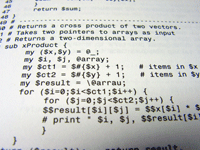|
The XML Document Object Model (XML DOM) defines a standard way for
accessing and manipulating XML documents.
What You Should Already Know
Before you continue you should have a basic understanding of the following:
If you want to study these subjects first, find the tutorials on our
Home page.
What is the DOM?
"The W3C Document Object Model (DOM) is a platform and language neutral interface
that allows programs and scripts to dynamically access and update the content,
structure, and style of a document."
The W3C DOM provides a standard set of objects for representing HTML and XML
documents, and a standard interface for accessing and manipulating them.
The DOM is separated into different parts (Core, XML, and HTML) and different
levels (DOM Level 1/2/3):
-
Core DOM - defines a standard set of objects for any structured document
-
XML DOM - defines a standard set of objects for XML documents
-
HTML DOM - defines a standard set of objects
for HTML documents
You can read more about the W3C DOM specifications / levels in our
W3C tutorial.
What is the XML DOM?
-
The XML DOM is the Document Object Model for XML
-
The XML DOM is platform and language independent
-
The XML DOM defines a standard set of objects for XML, and a standard way to
access and manipulate XML documents
-
The XML DOM is a W3C standard.
The XML DOM views XML documents as a tree structure of elements embedded within
other elements. All elements, their containing text and their attributes, can
be accessed through the DOM tree. Their contents can be modified or deleted,
and new elements can be created by the DOM. The elements, their text, and their
attributes are all known as nodes.
|


